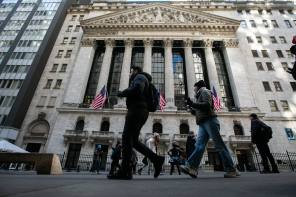Global dividends hit a record $1.25trn (£900bn) in 2017, having risen by an annualised 7.7 per cent thanks to a strengthening world economy and rising corporate confidence, according to the latest edition of Janus Henderson’s Global Dividend Index.
Underlying growth, which adjusts for movements in exchange rates, one-off special dividends and other factors, came in at 6.8 per cent. The report noted “less divergence across the different regions of the world than in previous years, reflecting a broad global economic recovery”.
Dividends grew in every geographic region and industry grouping. Janus Henderson predicted in the February report that dividend growth would continue this year at a similar pace.
But the emergence of several headwinds means intermediaries would do well to sharpen their focus on where dividends are not just attractive, but sustainable.
Chief among these is share price volatility, which has made a sudden return this year. A variety of factors have been blamed, from the tightening of monetary policy, to political and regulatory pressure on technology firms, to the growing possibility of a trade war between China and the US.
Whatever the reason, one notable outcome is that dividend-paying shares have been hit harder than most.
As of 18 April, the Investment Association’s UK All Companies sector was down 2.8 per cent year to date, while the UK Equity Income sector had dropped by 3 per cent. Admittedly, both growth and income managers have managed to protect against some of the falls in the UK: the FTSE 100 and FTSE All-Share indices are down 3.6 and 3.4 per cent, respectively, over the same period.
But dividend-payers’ struggles are more pronounced in other regions: in the US, the S&P 500 was down 0.1 per cent for the year to 16 April, but the Dividend Aristocrats index had fallen 2.2 per cent. These are companies known for their reliability. To be an aristocrat, a firm must have increased its dividend for each of the past 25 years. The problem is that many of these firms are now suffering as a result of their success. Having risen more than the market since the financial crisis, such shares have further to fall when investors become more nervous.
Home and away
Domestically, corporate stalwarts of old are facing challenges of their own. Tobacco stocks, namely British American Tobacco and Imperial Brands, have seen their share prices come under severe pressure as investors fret that sales volumes have peaked and e-cigarette growth may be lower than expected.
Other titans such as AstraZeneca have also been struggling, while technology firm MicroFocus – a smaller business but another fund manager favourite – saw its share price halve in April following a profit warning.











